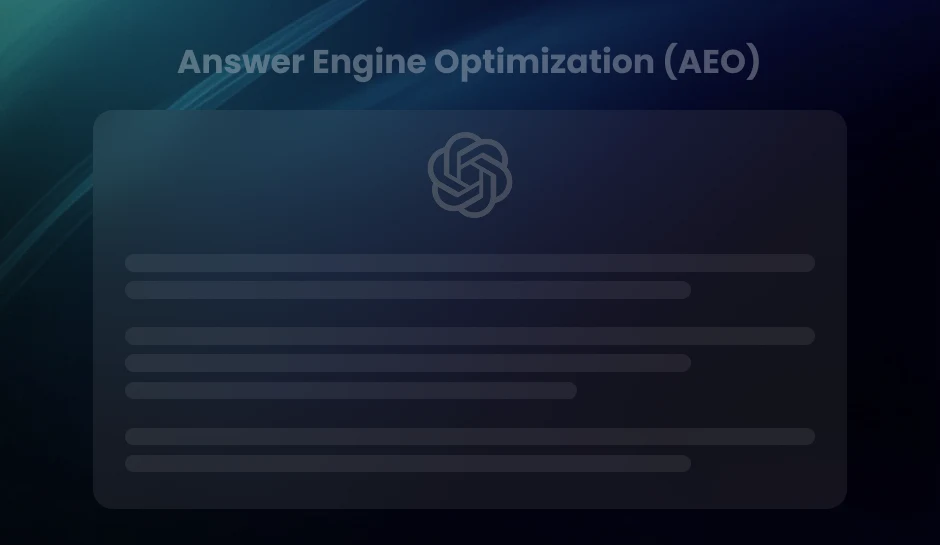
Choosing the Right Marketing Data Management Platform for Your Martech Stack
Choosing a marketing data management platform is no longer just about centralizing information. Today’s B2B teams need tools that adapt to complex data flows, support advanced analytics, and integrate with systems like Salesforce and HubSpot. This article compares key platforms based on use case, scalability, and technical fit, helping you find the right solution for long-term marketing success.
What happens when your marketing team has more tools than clarity? For many businesses, that is the reality. Data pours in from every channel, yet the full picture remains out of reach. Campaign metrics sit in disconnected dashboards. Customer journeys are fragmented. And by the time insights come together, the moment to act has already passed.
It is not a shortage of data. It is a shortage of alignment.
Disconnected systems slow your team down. Reporting becomes manual and inconsistent. Personalization efforts lose impact. And strategy begins to rely more on assumptions than on evidence.
A marketing data management platform solves these challenges by centralizing data across your entire martech stack. It transforms scattered information into a single source of truth, helping your team move faster, act smarter, and execute with confidence.
What Is a Marketing Data Management Platform?
A marketing data management platform is a centralized system that collects, organizes, and standardizes marketing data from multiple sources, making it accessible and actionable across your entire martech stack. For B2B marketers, it serves as the foundation for data-driven decision-making, campaign optimization, and customer journey orchestration.
Instead of logging into different platforms to retrieve analytics, customer insights, and campaign metrics, an MDM platform brings everything into one place, offering a unified view of your marketing performance.
How It Differs from CDP, DMP, and CRM
DiGGrowth
DiGGrowth is a marketing data orchestration and analytics platform built specifically for B2B marketing and revenue teams. It centralizes fragmented marketing and sales data from multiple sources into a single unified interface, making it easier to track performance, attribute revenue, and guide strategic decisions.
Unlike generic analytics platforms, DiGGrowth focuses on actionable insights rather than just dashboards. It connects seamlessly with your CRM, marketing automation tools, ad platforms, and web analytics software to deliver a complete picture of the customer journey.
How It Benefits Your Organization
- Improves Funnel Visibility: Consolidates lead, campaign, and revenue data across platforms so you can clearly see what is driving conversions.
- Supports Account-Based Marketing: Offers persona-level and account-level scoring to help sales teams prioritize the right leads.
- Reduces Manual Reporting: Automates performance reports for marketing and leadership teams, saving hours of time.
- Enables Better Attribution: Tracks multi-touch journeys to identify which touchpoints influence deals and revenue outcomes.
- Enhances Forecasting: Predicts future performance based on current marketing velocity and trends.
Real-World Example
A mid-sized B2B skincare brand used DiGGrowth to unify data from Google Ads, Klaviyo, Salesforce, and GA4. Before adopting the platform, the team struggled to understand how leads from different channels were progressing through the pipeline. Within two months of implementation, the brand reduced reporting time by 70%, improved MQL-to-SQL conversion rates, and made faster decisions around budget allocation.
Adobe Real-Time CDP
Adobe Real-Time CDP is a powerful enterprise-grade customer data platform designed to unify B2B and B2C data for real-time personalization. What sets it apart is its ability to merge anonymous and known customer data into a single actionable profile, while offering seamless integration with other Adobe Experience Cloud products.
It is ideal for large enterprises with complex data ecosystems and a need for intelligent, scalable audience activation.
- Real-Time Customer Profiles generated using Adobe’s Experience Data Model (XDM) and AI-based enrichment.
- AI-Powered Insights via Adobe Sensei for segmentation and journey orchestration.
- B2B Edition includes account-level views, lead-to-account matching, and CRM integration.
- Privacy-First Framework built for regulatory compliance across global markets.
Example in Practice
A multinational SaaS provider used Adobe Real-Time CDP to integrate CRM, website, and product usage data. They leveraged AI-driven segments to deliver contextual in-app experiences for enterprise users, resulting in a 27% boost in product upsell conversions.
Power BI
While not a data management platform in the strictest sense, it plays a critical role in visualizing and analyzing the unified data that MDM platforms collect. It is particularly valuable for marketing leaders who want to measure campaign performance, understand customer trends, and make real-time data-driven decisions.
Marketing Benefits of Power BI
- Seamlessly connects various MDM tools, CRM systems, ad platforms, and Excel.
- Offers AI-powered data insights to detect anomalies or forecast trends automatically.
- Facilitates data democratization across departments without compromising security.
Example Use Case
A mid-sized B2B tech company combined their campaign data from HubSpot and customer insights from Salesforce into Power BI dashboards. This enabled their marketing and sales teams to jointly monitor pipeline velocity and campaign ROI in one unified view, leading to a 22% lift in alignment-driven revenue.
Looker Studio
Looker Studio (formerly Google Data Studio) is a free data visualization tool by Google that empowers marketers to build real-time dashboards and detailed reports by pulling data from various sources, especially those within the Google ecosystem.
Its unique value lies in its accessibility, ease of collaboration, and seamless integration with Google tools like GA4, BigQuery, and Google Ads, making it ideal for lean marketing teams working with diverse datasets.
What Sets It Apart
- Native integration with Google Analytics 4, Google Ads, and BigQuery.
- Customizable, shareable dashboards with real-time collaboration.
- No-code environment, marketers can create dashboards without relying on developers.
- Data blending feature allows merging metrics from multiple platforms for holistic analysis.
Example Scenario
A SaaS startup used Looker Studio to blend GA4 website traffic data with Google Ads spend and CRM lead conversion metrics. The real-time performance dashboards helped them reduce cost per SQL by 18% within one quarter by identifying underperforming campaigns early.
Zoho Marketing Plus
Zoho Marketing Plus is an integrated marketing data management platform designed for small to mid-sized B2B organizations. It unifies campaign planning, automation, collaboration, and analytics in one place, making it easier to manage cross-channel marketing from a single dashboard. The platform is part of the larger Zoho ecosystem, ensuring tight alignment with Zoho CRM, SalesIQ, and other business tools.
It is best suited for marketing teams looking to simplify their stack without sacrificing visibility into campaign performance or customer engagement data.
Pros and Cons
Pros
- Centralized campaign management across email, social media, webinars, and more.
- Real-time collaboration features to streamline marketing workflows.
Cons
- Less effective for highly complex or enterprise-level data modeling.
- Limited third-party integrations outside the Zoho ecosystem.
- Advanced analytics capabilities may require external tools like Power BI.
Google BigQuery
Unlike traditional MDM platforms, BigQuery serves as a powerful backend infrastructure for aggregating and analyzing marketing data from multiple sources, ideal for B2B enterprises dealing with complex, high-volume data.
While not a marketing tool by itself, it is often used to store, process, and query unified data across campaigns, CRMs, web analytics, and ad platforms, enabling deeper insights when paired with tools like Looker Studio or DiGGrowth.
How It Can Benefit Your Organization
- Scalable performance: Handles billions of rows in seconds with minimal configuration.
- Cross-platform unification: Connects data from GA4, Google Ads, Salesforce, HubSpot, and custom data sources.
- Advanced analytics support: Enables segmentation, trend forecasting, and ROI modeling using SQL or Python.
- Security and governance: Offers fine-grained access control, encryption, and audit logging suitable for enterprise compliance.
How to Decide Which Platform Fits Your Martech Stack
Selecting the right marketing data management platform is a strategic decision that impacts your ability to execute campaigns, unify data, and measure ROI effectively. To make a confident choice, it is essential to assess not only features but also the broader fit within your organization’s goals, structure, and scalability needs.
Match Platform Strengths to Your Business Objectives
Begin by aligning platform capabilities with your core marketing goals. Whether your focus is on improving lead qualification, strengthening attribution accuracy, or enabling real-time personalization, the right platform should directly support these outcomes.
If your priority is advanced audience segmentation or behavioral data collection, a tool like Segment might be better suited. Let your objectives lead the evaluation, not the platform’s popularity.
Consider the Technical Maturity of Your Team
A platform’s complexity must align with your team’s capabilities. Some solutions, like Zoho or Looker Studio, offer intuitive interfaces designed for marketing teams with limited technical resources. Others, such as Google BigQuery or Snowflake, are highly flexible but require a deeper level of technical expertise for querying and data modeling.
Misalignment here can lead to low adoption or missed opportunities, so evaluate whether your current team can fully leverage the platform or whether you need additional support or training.
Evaluate Integration Pathways and Ecosystem Fit
Your marketing data platform must integrate smoothly with the rest of your tech stack. Check whether it connects natively with your CRM, automation, and analytics tools, such as Salesforce, HubSpot, or Marketo.
Native connectors, pre-built workflows, or open APIs significantly reduce the complexity and time required for implementation. A platform that fits naturally into your ecosystem will accelerate data activation and reduce the likelihood of operational friction.
Plan for Scalability and Long-Term Use
Think beyond current needs and consider how the platform will perform as your data environment evolves. A scalable platform should support new data sources, enable advanced capabilities like predictive analytics or AI integrations, and maintain performance as data volume increases.
It is also important to review the platform’s roadmap and support structure to ensure it aligns with your long-term strategy around automation, compliance, and cross-channel engagement.
Key Takeaways
- A marketing data management platform centralizes scattered marketing and sales data, making it easier to drive performance with clarity.
- Choosing the right platform depends on aligning features with your specific business goals and technical capabilities.
- Not every tool is built for every team. Evaluate integration options, scalability, and usability before making a decision.
- Visual analytics tools like Power BI and Looker Studio complement MDM platforms by turning raw data into actionable insights.
- Tools like DiGGrowth help B2B organizations move beyond fragmented reporting toward revenue-impacting marketing strategies.
Conclusion
Marketing today is a data-driven discipline. However, access to data alone is not enough. The ability to unify, interpret, and act on that data determines whether your strategy leads or lags. As you evaluate platforms, remember that the right choice is not necessarily the most feature-rich or complex.
It is the one that aligns best with your goals, integrates easily into your existing workflows, and scales with your business. Whether you are optimizing attribution, forecasting pipeline impact, or fine-tuning campaigns, your platform should simplify rather than complicate the process.
Are you ready to transform scattered data into strategic momentum? Your next milestone starts with clarity. Let’s help.
The team at DiGGrowth is ready to support your journey toward unified marketing intelligence. Contact us atinfo@diggrowth.com to get started.
Ready to get started?
Increase your marketing ROI by 30% with custom dashboards & reports that present a clear picture of marketing effectiveness
Start Free Trial
Experience Premium Marketing Analytics At Budget-Friendly Pricing.

Learn how you can accurately measure return on marketing investment.
Additional Resources
Don’t Let AI Break Your Brand: What Every CMO Should Know
AI isn’t just another marketing tool. It’s changing...
Read full post postFrom Demos to Deployment: Why MCP Is the Foundation of Agentic AI
A quiet revolution is unfolding in AI. And...
Read full post postAnswer Engine Optimization (AEO): The New Frontier of SEO in 2025
As digital experiences continue to evolve, so does...
Read full post postFAQ's
No. A marketing data management platform complements, not replaces, tools like CRM or CDP. It focuses on centralizing and structuring marketing data for analysis, while CRMs manage customer relationships and CDPs focus on unified customer profiles.
Implementation time varies based on complexity, data volume, and integrations. For small to mid-sized teams, it can take 4 to 8 weeks. Larger enterprises with complex stacks may require several months, especially when custom integrations or compliance checks are involved.
Yes, especially those looking to scale or struggling with fragmented marketing data. Many platforms offer modular pricing and simplified setups for smaller teams, making it easier to start with essential features and expand as business needs grow.
Leading platforms offer enterprise-grade security, including data encryption, role-based access, and compliance with standards like GDPR, SOC 2, and HIPAA. Always review the platform’s security certifications and protocols before integration.
Yes. By centralizing and standardizing data, these platforms make it easier to generate accurate reports and maintain audit trails. This is particularly valuable for industries with strict marketing compliance requirements, such as finance or healthcare.


